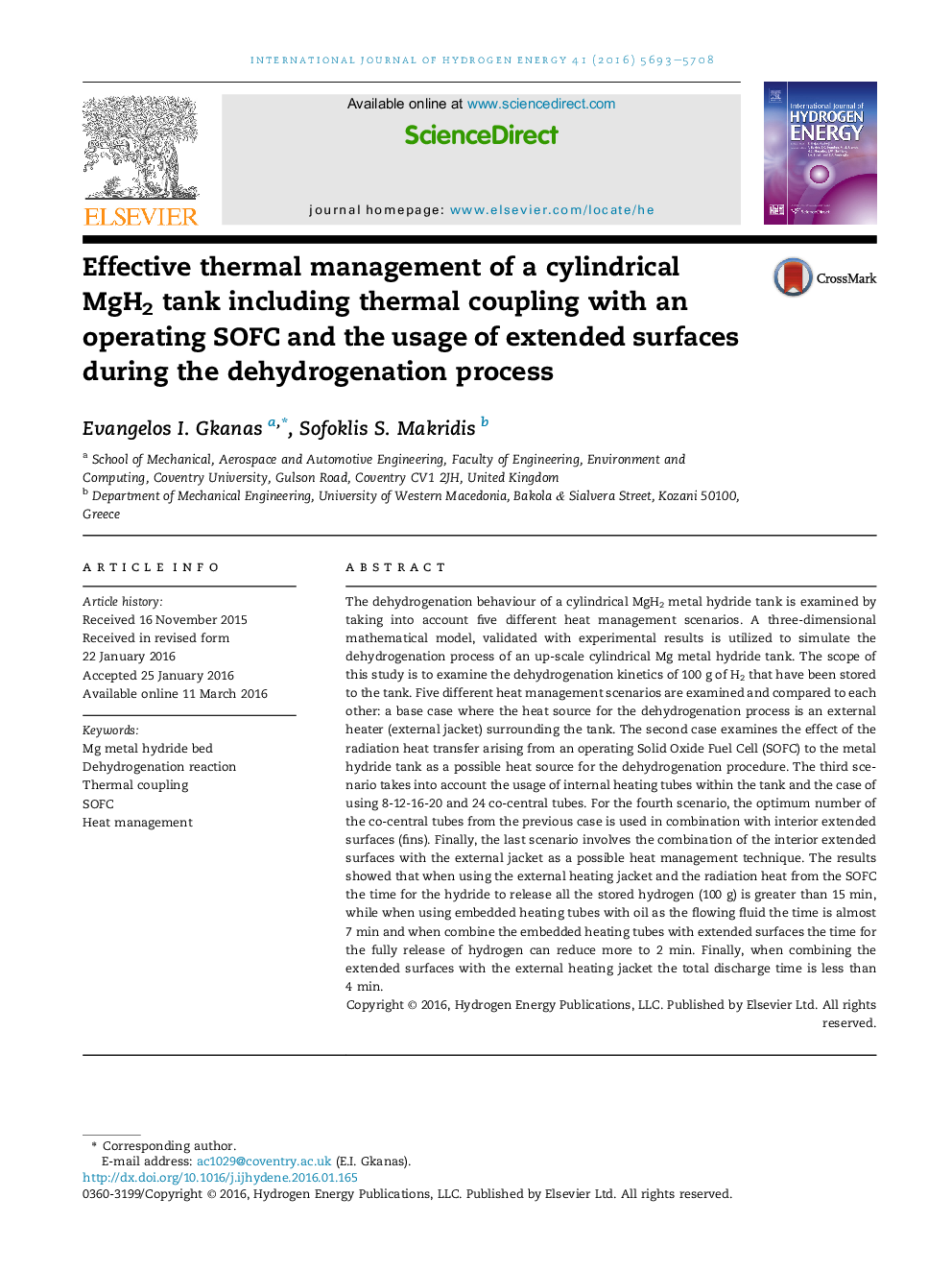| Article ID | Journal | Published Year | Pages | File Type |
|---|---|---|---|---|
| 1277682 | International Journal of Hydrogen Energy | 2016 | 16 Pages |
•Effective Thermal Management of MgH2 metal hydride bed.•Validation of the temperature profile and the hydrogen release fraction profile with valid experimental results.•Thermal Coupling of an operating SOFC at 700 °C with the MgH2 metal hydride bed.•Effect of using extended surfaces (fins) at the dehydrogenation reaction.•Effect of using embedded heating elements within the metal hydride at the dehydrogenation reaction.
The dehydrogenation behaviour of a cylindrical MgH2 metal hydride tank is examined by taking into account five different heat management scenarios. A three-dimensional mathematical model, validated with experimental results is utilized to simulate the dehydrogenation process of an up-scale cylindrical Mg metal hydride tank. The scope of this study is to examine the dehydrogenation kinetics of 100 g of H2 that have been stored to the tank. Five different heat management scenarios are examined and compared to each other: a base case where the heat source for the dehydrogenation process is an external heater (external jacket) surrounding the tank. The second case examines the effect of the radiation heat transfer arising from an operating Solid Oxide Fuel Cell (SOFC) to the metal hydride tank as a possible heat source for the dehydrogenation procedure. The third scenario takes into account the usage of internal heating tubes within the tank and the case of using 8-12-16-20 and 24 co-central tubes. For the fourth scenario, the optimum number of the co-central tubes from the previous case is used in combination with interior extended surfaces (fins). Finally, the last scenario involves the combination of the interior extended surfaces with the external jacket as a possible heat management technique. The results showed that when using the external heating jacket and the radiation heat from the SOFC the time for the hydride to release all the stored hydrogen (100 g) is greater than 15 min, while when using embedded heating tubes with oil as the flowing fluid the time is almost 7 min and when combine the embedded heating tubes with extended surfaces the time for the fully release of hydrogen can reduce more to 2 min. Finally, when combining the extended surfaces with the external heating jacket the total discharge time is less than 4 min.
